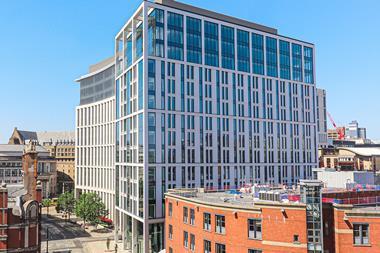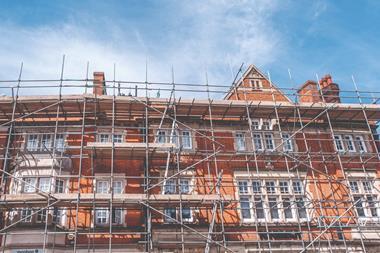The return to the office is suddenly very real. After several stops and starts, we are seeing a sustained and hopefully irreversible move back to the workplace.

Employers and employees are finding their place on a new flexible working spectrum, with a mix that works for each business. For designers, this is an opportunity to use the tools of our trade to help bring about a rebirth of the office, even as many occupiers look to reduce their workplace footprint. It’s about quality over quantity.
The old working model is gone, and almost every company will be exploring some form of hybrid-working future. We’re all grappling with the question of where this leaves the corporate headquarters. The central-hub workplace is now competing with the ease of working from home and a new middle ground of local shared workspace. But this competition is leading to a welcome evolution. One that’s helping to focus our minds on
what we want and need from an office. It might be smaller, but it’ll be better: a genuinely collaborative space that is bespokely designed for the needs of a business, and that holds the human experience as the top priority.
This is essential, because the rebirth of the office starts and ends with people: making the workplace a desirable destination that’s worth the commute for colleagues and visitors. Our offices will come into their own when they offer space for hosting and collaboration – half workplace, half events venue. Rows of desks are out, but headquarters as landmark destinations are in.
Brand personality
Beyond a place to come together, more than ever the office needs to be a statement of brand and personality. Regardless of where you fall on the hybrid-working scale, a dispersed working model must be grounded by a stronger, smarter, better headquarters that is the hub and heart of the business – a place that can give your employees a sense of belonging and unity, and that instils in them the values and atmosphere of the company, which they can carry forward when working remotely.

To achieve these objectives, the best design puts function first. Making employees feel valued, while also giving them the best tools for productivity and collaboration, means designing the office with a range of spaces for different tasks, teams and personalities.
From private concentration zones to areas meant for hosting events. From rooms designed for digital interaction with remote workers, to tech-free ‘sanctuary’ spaces for employees to switch off and connect face to face. If the new normal office isn’t practical and intuitive, staff might be left longing for the kitchen table.
But each occupier will have a different idea of what ‘quality workspace’ means to them, and it’s essential that businesses find ways to differentiate their offer and create spaces with real character. That’s the magic ingredient that will make the bespoke corporate office stand out from co-working or shared workspace. If people visit the office less frequently, those interactions need to be more memorable and purposeful, which means bringing the mindset of retail- and hospitality-experience design into the future workplace.
Offices must be inspiring and uplifting – and this can only be realised by using design to create a unique blend that reflects the personality and culture of a business alongside their functional needs and future working model. This requires designers that really understand the company and its brief, and who are placemaking as much as workspace-making. If this can be achieved, then we’ll be able to look back at 2021 as the rebirth of the office, not its death knell.
John Avery is director at LOM architecture and design
































No comments yet